Who Was Edward Edinger?
Edward F. Edinger (1922-1998) was a prominent American psychiatrist, analyst, and author who made significant contributions to the field of analytical psychology. As one of the leading interpreters of Carl Jung’s work in the United States, Edinger devoted his career to elucidating the process of individuation and exploring the archetypal dimensions of the psyche. His innovative theories and lucid writings have had a profound impact on the development of Jungian psychology and its application to cultural and spiritual issues.
Main Ideas and Key Points:
1. Edinger’s work focuses on the process of individuation, which he sees as the central task of human psychological and spiritual development.
2. He emphasizes the importance of the ego-Self axis in psychological growth, describing the ongoing dialogue between the conscious ego and the archetypal Self.
3. Edinger explores the symbolic language of alchemy as a metaphor for the transformative processes of the psyche.
4. He applies Jungian concepts to the interpretation of religious and mythological symbols, seeing them as expressions of archetypal realities.
5. Edinger develops the concept of “psychic inflation” to describe the ego’s identification with archetypal contents and the subsequent need for deflation and integration.
6. He explores the archetypal basis of cultural and historical phenomena, particularly in relation to the evolution of Western consciousness.
7. Edinger emphasizes the importance of symbolic thinking and the role of images in psychological development and healing.
8. He investigates the psychological dynamics of evil and the shadow, both in individuals and in collective manifestations.
9. Edinger applies Jungian analysis to literary works, demonstrating the archetypal patterns in great literature.
10. He explores the relationship between psychology and religion, seeing individuation as a fundamentally spiritual process.
11. Edinger develops the concept of the “new myth” emerging in the modern psyche, centered on the conscious realization of the Self.
12. He emphasizes the healing power of archetypal images and their role in psychotherapy and personal transformation.
2. The Ego-Self Axis and the Process of Individuation
Central to Edinger’s work is his elaboration of Jung’s concept of individuation. For Edinger, individuation is the lifelong process of psychological development through which a person becomes a unified, integrated self. This process revolves around what he calls the “ego-Self axis” – the dynamic relationship between the conscious ego and the archetypal Self, which represents the totality of the psyche.
Edinger describes the ego-Self axis as a continuum along which consciousness evolves. In early life, the ego is largely identified with the Self, leading to a state of “inflation” where the individual feels omnipotent and at one with the world. As development proceeds, the ego gradually differentiates from the Self, leading to a sense of alienation and the emergence of a separate identity. The task of individuation is to re-establish a conscious connection between the ego and Self, creating a dynamic balance between differentiation and unity.
This process, Edinger argues, is not linear but cyclical. Throughout life, we experience alternating phases of inflation (identification with the Self) and alienation (separation from the Self). Each cycle offers opportunities for growth and integration, as the ego learns to relate to the Self without being overwhelmed by it. The goal is to achieve a state of “objective cognition” where the ego can perceive and relate to the archetypal dimension of experience without losing its autonomy.
3. Alchemy as a Model of Psychic Transformation
One of Edinger’s most significant contributions was his exploration of alchemy as a symbolic system describing the process of individuation. Following Jung’s pioneering work, Edinger saw in the obscure language and images of medieval alchemy a rich metaphorical description of psychic transformation.
In works like “Anatomy of the Psyche” and “The Mystery of the Coniunctio,” Edinger meticulously analyzes alchemical texts and images, revealing their psychological significance. He shows how the stages of the alchemical opus – nigredo (blackening), albedo (whitening), rubedo (reddening) – correspond to phases of psychological development and healing.
For Edinger, the central aim of alchemy – the creation of the philosopher’s stone – symbolizes the realization of the Self. The various operations described in alchemical texts (dissolution, coagulation, sublimation, etc.) represent psychological processes involved in integrating unconscious contents and transforming the personality. By engaging with these symbolic processes, Edinger argues, we can gain deeper insight into the dynamics of our own psychic life and the path of individuation.
4. Archetypal Interpretation of Religious and Mythological Symbols
Edinger devoted much of his work to exploring the psychological significance of religious and mythological symbols. In books like “The Christian Archetype” and “The Eternal Drama,” he applies Jungian analysis to central themes and figures of Western religious tradition, revealing their archetypal foundations.
For Edinger, religious symbols are not mere cultural artifacts but expressions of fundamental psychic realities. The figures of Christ, Buddha, or Krishna, for instance, represent archetypal images of the Self – models of psychic wholeness and integration. Biblical narratives, he argues, can be read as symbolic descriptions of psychological processes, offering insight into the challenges and stages of individuation.
This approach allows Edinger to bridge the gap between psychology and religion, showing how religious experience can be understood in psychological terms without reducing it to mere subjectivity. He sees the great religious traditions as repositories of archetypal wisdom, offering symbolic resources for confronting the fundamental issues of human existence.
5. Psychic Inflation and the Dangers of Archetypal Identification
Edinger developed the concept of “psychic inflation” to describe the ego’s tendency to identify with archetypal contents of the unconscious. When inflation occurs, the ego takes on the qualities of the Self, leading to grandiosity, messianic fantasies, or a sense of cosmic importance. While this can feel exhilarating, it ultimately leads to a dangerous disconnect from reality.
The counterpart to inflation is alienation – the ego’s sense of separation from the Self and the larger matrix of meaning. Edinger sees these two states as poles between which the psyche oscillates in the course of development. The challenge is to find a middle ground where the ego can relate to archetypal realities without being overwhelmed by them.
Edinger emphasizes the importance of “deflation” – the painful but necessary process of disidentifying from inflated archetypal contents. This often involves confronting one’s limitations, acknowledging failures, and accepting the reality of human finitude. While deflation can be experienced as depression or loss of meaning, it is essential for genuine psychological growth.
Through repeated cycles of inflation and deflation, Edinger argues, the ego gradually develops a more mature relationship to the Self. It learns to draw inspiration and energy from archetypal sources without losing its grounding in personal reality. This balanced stance allows for authentic individuation and the realization of one’s unique potential.
6. The Evolution of Western Consciousness
In works like “The Creation of Consciousness” and “The New God-Image,” Edinger explores the archetypal basis of cultural and historical phenomena, particularly in relation to the evolution of Western consciousness. He sees the history of Western culture as a collective individuation process, marked by the gradual differentiation of consciousness from unconscious, mythic modes of perception.
Edinger traces this evolution through key moments in Western intellectual and spiritual history – from the emergence of monotheism to the scientific revolution and the rise of modern individualism. He argues that each stage of this process involves both gains in conscious understanding and losses of instinctual connection to the archetypal realm.
The culmination of this historical process, for Edinger, is the modern psychological perspective pioneered by depth psychology. He sees the work of Freud, Jung, and their successors as heralding a new stage in the evolution of consciousness – one in which we can consciously engage with the archetypal dimension of experience without regressing to pre-modern modes of thought.
At the same time, Edinger warns of the dangers inherent in this evolutionary process. The hyper-rationalism and materialism of modern culture, he argues, have led to a profound alienation from the psyche’s deeper sources of meaning. The task of our time, he suggests, is to forge a new synthesis between rational consciousness and archetypal wisdom – a “new myth” that can guide us through the challenges of the modern world.
7. The Importance of Symbolic Thinking
Throughout his work, Edinger emphasizes the crucial role of symbolic thinking in psychological development and healing. He argues that the capacity to perceive and engage with symbolic meanings is essential for navigating the archetypal dimension of experience and achieving genuine individuation.
For Edinger, symbols are not mere signs or allegories but living connections between conscious and unconscious, personal and archetypal. They serve as bridges between different levels of psychic reality, allowing us to apprehend and integrate unconscious contents. By learning to think symbolically, we open ourselves to the transformative power of the archetypes and the guidance of the Self.
In clinical practice, Edinger advocated for a symbolic approach to dream interpretation and the analysis of personal experiences. Rather than reducing dreams to personal associations or fixed meanings, he encouraged a more open, amplificatory method that allows the full richness of symbolic imagery to emerge. This approach, he believed, could activate the healing potential inherent in archetypal symbols and facilitate genuine transformation.
8. The Problem of Evil and the Shadow
Edinger devoted considerable attention to the psychological dynamics of evil, both in its personal manifestations as the shadow and in its collective expressions in history and culture. In works like “The Mystery of the Coniunctio,” he explores the archetypal roots of destructive and malevolent impulses, seeing them as expressions of psychic fragmentation and alienation from the Self.
For Edinger, the problem of evil is intimately connected to the process of individuation. The shadow – those aspects of ourselves that we reject or fail to recognize – represents a crucial challenge on the path to wholeness. By confronting and integrating our shadow qualities, we not only heal personal neuroses but also contribute to the moral evolution of the collective.
At the collective level, Edinger saw many of the great evils of history as expressions of archetypal forces that have become dissociated from conscious control. The mass movements and ideologies that have wreaked such havoc in the modern world, he argued, often draw their power from inflated identifications with archetypal contents. The antidote to such collective inflation, he believed, lies in the individual work of consciousness-raising and shadow integration.
9. Archetypal Analysis of Literature
Edinger applied his archetypal approach to the analysis of literary works, demonstrating how great literature often embodies universal psychological patterns and transformative processes. In books like “Melville’s Moby-Dick: An American Nekyia” and “Goethe’s Faust: Notes for a Jungian Commentary,” he reveals the deep archetypal structures underlying these classic texts.
For Edinger, literature serves as a vital repository of archetypal wisdom, offering symbolic resources for confronting the challenges of individuation. By engaging deeply with literary works, we can access archetypal patterns that resonate with our own psychological struggles and aspirations. This approach not only enriches our understanding of literature but also deepens our insight into the human psyche and the process of personal transformation.
10. The Relationship Between Psychology and Religion
A central theme in Edinger’s work is the relationship between psychology and religion. Following Jung, he saw individuation as a fundamentally spiritual process, involving the realization of a transpersonal center of the personality. At the same time, he argued that traditional religious forms often fail to meet the psychological needs of modern individuals, leading to a crisis of meaning and spiritual alienation.
Edinger’s solution was to develop a psychological approach to spirituality that honors the wisdom of religious traditions while adapting it to the needs of the modern psyche. He saw in depth psychology, particularly Jung’s work, the emergence of a “new myth” centered on the conscious realization of the Self. This new myth, he believed, could provide a bridge between the rational, scientific worldview and the archetypal realities expressed in traditional religions.
In practice, this meant interpreting religious symbols and experiences in psychological terms, seeing them as expressions of archetypal processes rather than literal truths. It also involved developing new forms of ritual and spiritual practice that could facilitate the process of individuation. For Edinger, the analyst’s consulting room could serve as a kind of secular temple, where individuals could encounter the numinous dimension of the psyche and work towards greater wholeness.
11. The Emergence of a New Myth
One of Edinger’s most forward-looking contributions was his exploration of the “new myth” emerging in the modern psyche. This myth, he argued, centers on the conscious realization of the Self and the integration of archetypal realities into everyday life. Unlike traditional mythologies, which often projected divine qualities onto external figures or realms, the new myth recognizes the sacred dimension within the human psyche itself.
For Edinger, this emerging myth represents a crucial evolutionary step in human consciousness. It offers the possibility of a more mature spirituality that integrates scientific understanding with archetypal wisdom. The task of realizing this new myth, he believed, falls to each individual as they undertake the work of individuation.
At the same time, Edinger recognized the challenges inherent in this task. The new myth lacks the collective support and established forms of traditional religions. It requires individuals to bear the full weight of encountering the numinous without the protective barriers of dogma or institutional authority. This can lead to inflation, disorientation, or a flight back into more rigid belief systems.
The solution, Edinger suggested, lies in developing new cultural forms and practices that can support individuals in this challenging work. This might involve creating new rituals, reinterpreting traditional symbols, or developing educational approaches that foster symbolic thinking and archetypal awareness. The goal is to create a cultural container that can hold the tension between rational consciousness and archetypal experience, facilitating genuine psychological and spiritual growth.
12. The Healing Power of Archetypal Images
Throughout his work, Edinger emphasized the healing potential inherent in archetypal images and symbols. He saw these universal patterns as carriers of psychic energy, capable of catalyzing profound transformation when consciously engaged. In psychotherapy and personal growth work, he advocated for methods that activate and amplify archetypal imagery, allowing its transformative power to work on the psyche.
This approach is particularly evident in Edinger’s work with dreams and active imagination. He encouraged individuals to engage deeply with the symbolic content of their dreams, amplifying and exploring the images rather than reducing them to fixed meanings. Similarly, he saw value in practices like art therapy, sandplay, and ritual enactment as ways of constellating and integrating archetypal energies.
For Edinger, this work with archetypal images was not merely a technique but a fundamental reorientation of consciousness. By learning to perceive and relate to the archetypal dimension of experience, we open ourselves to the healing and guiding influence of the Self. We become participants in a cosmic drama of transformation, aligning our personal journey with the greater unfolding of psychic evolution.
13. Legacy and Relevance
Edward Edinger’s contributions to analytical psychology have had a lasting impact on the field, influencing generations of therapists, scholars, and seekers. His clear and accessible writing style has made Jungian concepts more widely available, helping to bridge the gap between academic psychology and popular understanding.
Edinger’s work remains highly relevant in the 21st century, offering valuable insights into the psychological challenges of our time. His exploration of inflation and alienation speaks to the narcissistic tendencies and existential crises prevalent in modern culture. His emphasis on symbolic thinking provides an antidote to the hyper-rationalism and materialism that dominate much of contemporary discourse.
Moreover, Edinger’s vision of a new myth emerging from the depths of the modern psyche offers hope and direction in an age of spiritual disorientation. As traditional religious forms lose their hold and secular ideologies prove inadequate, his psychological approach to spirituality provides a potential path forward. It offers a way of engaging with the numinous dimension of experience that is compatible with scientific understanding yet honors the soul’s need for meaning and transcendence.
At the same time, Edinger’s work invites ongoing critique and development. Like all pioneering thinkers, he was shaped by the cultural assumptions of his time and place. His focus on Western religious symbolism, for instance, may need to be expanded to incorporate a more global perspective. His concept of the Self, while powerful, may benefit from dialogue with non-dualistic Eastern philosophies and contemporary research in consciousness studies.
As we face the complex challenges of the 21st century – from ecological crisis to technological disruption to the fragmentation of shared meaning – Edinger’s archetypal approach offers valuable resources. It provides a framework for understanding the deep patterns underlying personal and collective experience, and tools for facilitating genuine transformation. By engaging with his work, we can deepen our understanding of the individuation process and our capacity to navigate the archetypal dimension of life.
Ultimately, Edinger’s legacy is an invitation to a more conscious, integrated way of being in the world. It challenges us to confront the depths of our own psyche, to engage with the numinous realities that shape our lives, and to participate actively in the evolution of consciousness. As we take up this work, we contribute not only to our own growth but to the healing and transformation of our world.
Edward Edinger’s archetypal psychology offers a profound and comprehensive vision of human development and transformation. Building on the foundations laid by Carl Jung, Edinger elaborated a psychological approach that honors the depths of the psyche while remaining grounded in the realities of modern life. His work illuminates the process of individuation, offering maps and methods for navigating the complex terrain of the soul.
At the heart of Edinger’s vision is a recognition of the fundamental importance of the ego-Self relationship in psychological development. By elaborating on this dynamic, he provides a framework for understanding the oscillations of human experience – from inflation to alienation, from unconscious identification to conscious realization. This perspective offers valuable insights into personal growth, psychotherapy, and the broader evolution of human consciousness.
Edinger’s exploration of alchemy as a symbolic system describing psychic transformation has opened up new avenues for understanding the process of individuation. By decoding the rich imagery of alchemical texts, he reveals the deep wisdom embedded in this ancient tradition and its relevance to modern psychological work. This approach not only enriches our understanding of the psyche but also provides practical tools for facilitating personal and collective transformation.
His archetypal interpretation of religious and mythological symbols serves as a bridge between traditional spiritual wisdom and contemporary psychological insight. By revealing the psychological significance of religious imagery, Edinger offers a way to engage with the numinous dimension of experience that is compatible with a modern, rational worldview. This approach has the potential to heal the split between science and spirituality that has characterized much of modern thought.
Edinger’s concept of psychic inflation and his exploration of the shadow provide crucial insights into the dynamics of evil and destructiveness, both personal and collective. His work in this area offers valuable resources for confronting the moral challenges of our time and working towards greater psychological integration and ethical responsibility.
The emphasis on symbolic thinking throughout Edinger’s work highlights the importance of cultivating a more nuanced, multidimensional mode of perception. In an age dominated by literal, reductionistic thinking, his approach offers a much-needed corrective, opening up new possibilities for meaning-making and creative engagement with life.
Edinger’s vision of a new myth emerging in the modern psyche points towards a more mature, psychologically-informed spirituality. This perspective offers hope and direction in an age of spiritual disorientation, providing a framework for engaging with the sacred that honors both scientific understanding and the soul’s need for meaning and transcendence.
As we face the complex challenges of the 21st century, Edinger’s work remains profoundly relevant. His archetypal approach provides tools for understanding and navigating the deep currents shaping personal and collective experience. It offers resources for psychological healing, spiritual growth, and cultural renewal.
At the same time, engaging with Edinger’s ideas invites us to continue developing and refining his approach. As our understanding of the psyche evolves and we encounter new cultural and global realities, we must find ways to expand and adapt his insights. This might involve integrating perspectives from diverse cultural traditions, incorporating new scientific findings, or developing new practices for working with archetypal energies.
Ultimately, Edinger’s legacy is an invitation to a more conscious, integrated way of being in the world. It challenges us to confront the depths of our own psyche, to engage with the numinous realities that shape our lives, and to participate actively in the evolution of consciousness. By taking up this work, we contribute not only to our own growth but to the healing and transformation of our world.
As we move further into the complexities of the 21st century, Edinger’s archetypal vision offers a valuable compass. It reminds us of the profound resources available within the psyche, the transformative power of symbolic engagement, and the sacred nature of the individuation journey. May we have the courage and wisdom to continue this exploration, deepening our understanding of ourselves and our world, and contributing to the ongoing evolution of human consciousness.
Bibliography of Edward Edinger’s Major Works:
- Ego and Archetype: Individuation and the Religious Function of the Psyche (1972)
- Anatomy of the Psyche: Alchemical Symbolism in Psychotherapy (1985)
- The Creation of Consciousness: Jung’s Myth for Modern Man (1984)
- The Christian Archetype: A Jungian Commentary on the Life of Christ (1987)
- Encounter with the Self: A Jungian Commentary on William Blake’s Illustrations of the Book of Job (1986)
- The Mystery of the Coniunctio: Alchemical Image of Individuation (1994)
- The Mysterium Lectures: A Journey through C.G. Jung’s Mysterium Coniunctionis (1995)
- The New God-Image: A Study of Jung’s Key Letters Concerning the Evolution of the Western God-Image (1996)
- The Psyche in Antiquity: Early Greek Philosophy: From Thales to Plotinus (1999)
- The Eternal Drama: The Inner Meaning of Greek Mythology (1994)
- Melville’s Moby-Dick: An American Nekyia (1995)
- Goethe’s Faust: Notes for a Jungian Commentary (1990)
- The Aion Lectures: Exploring the Self in C.G. Jung’s Aion (1996)
- Science of the Soul: A Jungian Perspective (2002)
- The Living Psyche: A Jungian Analysis in Pictures (1990)
References and Citations
- Edinger, E. F. (1972). Ego and Archetype: Individuation and the Religious Function of the Psyche. New York: Penguin Books.
- Edinger, E. F. (1985). Anatomy of the Psyche: Alchemical Symbolism in Psychotherapy. La Salle, IL: Open Court.
- Edinger, E. F. (1984). The Creation of Consciousness: Jung’s Myth for Modern Man. Toronto: Inner City Books.
- Jung, C. G. (1968). The Collected Works of C.G. Jung. Princeton, NJ: Princeton University Press.
- Sharp, D. (1991). Jung Lexicon: A Primer of Terms & Concepts. Toronto: Inner City Books.
- Stein, M. (1998). Jung’s Map of the Soul: An Introduction. Chicago: Open Court.
- Samuels, A., Shorter, B., & Plaut, F. (1986). A Critical Dictionary of Jungian Analysis. London: Routledge.
- von Franz, M. L. (1980). Alchemy: An Introduction to the Symbolism and the Psychology. Toronto: Inner City Books.
- Hillman, J. (1975). Re-Visioning Psychology. New York: Harper & Row.
- Neumann, E. (1954). The Origins and History of Consciousness. Princeton, NJ: Princeton University Press.
- Whitmont, E. C. (1969). The Symbolic Quest: Basic Concepts of Analytical Psychology. Princeton, NJ: Princeton University Press.
- Jacobi, J. (1973). The Psychology of C.G. Jung. New Haven: Yale University Press.
- Stein, M. (2006). The Principle of Individuation: Toward the Development of Human Consciousness. Wilmette, IL: Chiron Publications.
- Corbett, L. (1996). The Religious Function of the Psyche. London: Routledge.
- Hollis, J. (2000). The Archetypal Imagination. College Station: Texas A&M University Press.
- Stevens, A. (1990). On Jung. London: Routledge.
- Brooke, R. (1991). Jung and Phenomenology. London: Routledge.
- Rowland, S. (2005). Jung as a Writer. London: Routledge.
- Shamdasani, S. (2003). Jung and the Making of Modern Psychology: The Dream of a Science. Cambridge: Cambridge University Press.
- Dourley, J. P. (1984). The Illness That We Are: A Jungian Critique of Christianity. Toronto: Inner City Books.
- Edinger, E. F. (1996). The New God-Image: A Study of Jung’s Key Letters Concerning the Evolution of the Western God-Image. Wilmette, IL: Chiron Publications.
- Papadopoulos, R. K. (Ed.). (2006). The Handbook of Jungian Psychology: Theory, Practice and Applications. London: Routledge.
- Tacey, D. (2006). How to Read Jung. London: Granta Books.
- Stein, M. (Ed.). (2010). Jungian Psychoanalysis: Working in the Spirit of Carl Jung. Chicago: Open Court.
- Young-Eisendrath, P., & Dawson, T. (Eds.). (2008). The Cambridge Companion to Jung. Cambridge: Cambridge University Press.
Read More Depth Psychology Articles:
Taproot Therapy Collective Podcast
Jungian Innovators
Jungian Topics
How Psychotherapy Lost its Way
Therapy, Mysticism and Spirituality?
The Symbolism of the Bollingen Stone
What Can the Origins of Religion Teach us about Psychology
The Major Influences from Philosophy and Religions on Carl Jung
How to Understand Carl Jung
How to Use Jungian Psychology for Screenwriting and Writing Fiction
The Symbolism of Color in Dreams
How the Shadow Shows up in Dreams
Using Jung to Combat Addiction
Jungian Exercises from Greek Myth
Jungian Shadow Work Meditation
Free Shadow Work Group Exercise
Post Post-Moderninsm and Post Secular Sacred
The Origins and History of Consciousness
Jung’s Empirical Phenomenological Method
The Future of Jungian Thought
Jungian Analysts



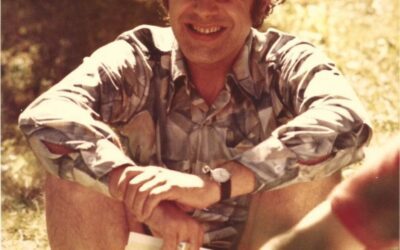
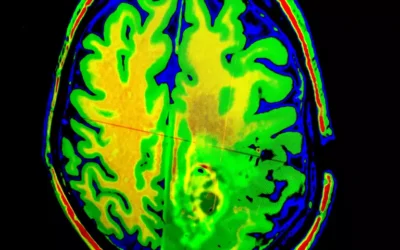
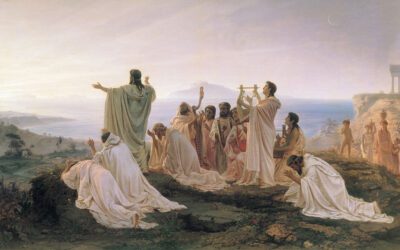
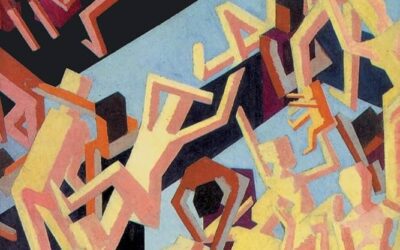
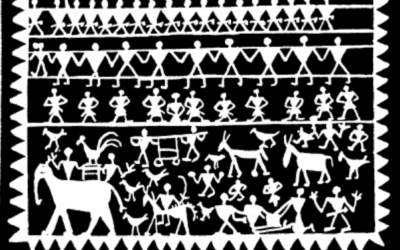

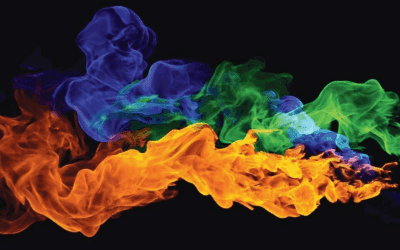
















0 Comments